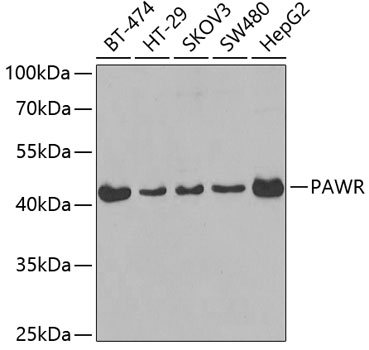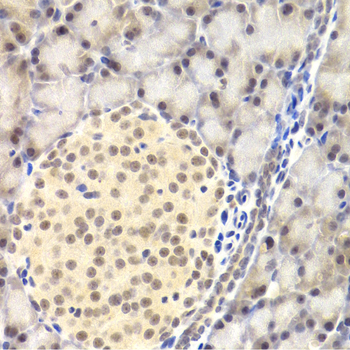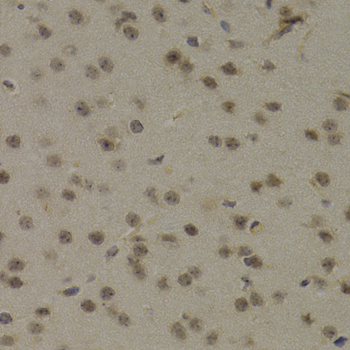-
Product Name
PAWR Polyclonal Antibody
- Documents
-
Description
Polyclonal antibody to PAWR
-
Tested applications
WB, IHC
-
Species reactivity
Human, Mouse, Rat
-
Alternative names
PAWR antibody; PAR4 antibody; Par-4 antibody; pro-apoptotic WT1 regulator antibody
-
Isotype
Rabbit IgG
-
Preparation
Antigen: Recombinant protein of human PAWR
-
Clonality
Polyclonal
-
Formulation
PBS with 0.02% sodium azide, 50% glycerol, pH7.3.
-
Storage instructions
Store at -20℃. Avoid freeze / thaw cycles.
-
Applications
WB 1:500 - 1:2000
IHC 1:50 - 1:100 -
Validations

Western blot - PAWR Polyclonal Antibody
Western blot analysis of extracts of various cell lines, using PAWR antibody at 1:400 dilution.Secondary antibody: HRP Goat Anti-Rabbit IgG (H+L) at 1:10000 dilution.Lysates/proteins: 25ug per lane.Blocking buffer: 3% nonfat dry milk in TBST.Detection: ECL Basic Kit .Exposure time: 30s.

Immunohistochemistry - PAWR Polyclonal Antibody
Immunohistochemistry of paraffin-embedded rat pancreas using PAWR Antibody at dilution of 1:200 (40x lens).

Immunohistochemistry - PAWR Polyclonal Antibody
Immunohistochemistry of paraffin-embedded mouse brain using PAWR Antibody at dilution of 1:200 (40x lens).
-
Background
Pro-apoptopic protein capable of selectively inducing apoptosis in cancer cells, sensitizing the cells to diverse apoptotic stimuli and causing regression of tumors in animal models. Induces apoptosis in certain cancer cells by activation of the Fas prodeath pathway and coparallel inhibition of NF-kappa-B transcriptional activity. Inhibits the transcriptional activation and augments the transcriptional repression mediated by WT1. Down-regulates the anti-apoptotic protein BCL2 via its interaction with WT1. Seems also to be a transcriptional repressor by itself. May be directly involved in regulating the amyloid precursor protein (APP) cleavage activity of BACE1.
Related Products / Services
Please note: All products are "FOR RESEARCH USE ONLY AND ARE NOT INTENDED FOR DIAGNOSTIC OR THERAPEUTIC USE"
